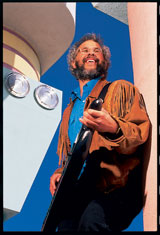By Steve Oppenheimer
(December 2003)
To a large extent, audio and video producers have long inhabited different worlds that met only in high-ticket professional production or in low-end consumer gear that lacked editing capabilities. Most video producers and manufacturers of video equipment treated audio as an afterthought. Until recently, video-editing programs offered only rudimentary audio features, and although many audio-editing programs have at least some tools for scoring to picture, you rarely find a product with strong features for both audio and video production.
Fortunately, this situation is changing rapidly. Affordable DV cameras and editing programs like Adobe Premiere and Apple Final Cut Pro and Final Cut Express are becoming increasingly popular as home-video producers discover how easy it is to create impressive effects and make sophisticated edits. At the same time, digital audio-editing software has matured and come down in price. As a result, it appears that the worlds of digital audio and video are finally converging.
The big money is in video, so it isn’t surprising that several companies that develop video-editing software have purchased music-software companies, rather than the other way around. The harbinger was Avid’s purchase of Digidesign several years ago, but Avid exclusively addressed the needs of video professionals. Apple’s recent purchase of Emagic and its independent development of its Soundtrack loop sequencer/editor, Pinnacle’s acquisition of Steinberg, and Adobe’s purchase of Syntrillium’s Cool Edit Pro are significant because although these companies certainly address the needs of professionals, they also develop products for semipros and hobbyists. Sony Digital Pictures recently joined the fray by purchasing the software assets of Sonic Foundry, a company that had already introduced Vegas Video, an integrated audio-and-video-editing program.
It seems fair to conclude from all this activity that, in the future, audio will no longer be viewed as the poor stepchild of video. When companies like Adobe, Apple, Pinnacle, and Sony invest in the same industry, either something very good is about to happen or we’re going to see a train wreck. I suspect the former is more likely.
Two noteworthy exceptions to this development are Mark of the Unicorn and Cakewalk. MOTU hasn’t indicated any major changes in direction, but Roland Corporation recently bought an undisclosed interest in Cakewalk, and the two companies have a codevelopment agreement. This is worth noting because although Roland makes musical equipment, it also owns Edirol, which makes digital video-editing products, as well as music products. Furthermore, the new Roland V-Synth and MC-909 include the new V-Link feature for controlling Edirol video hardware. Add Cakewalk to that mix, and you have the potential for integrated multimedia-production solutions.
Hopefully, in the rush to develop multimedia products, the new owners won’t forget about musicians’ specific needs. Hang on — it’s going to be an interesting ride!
